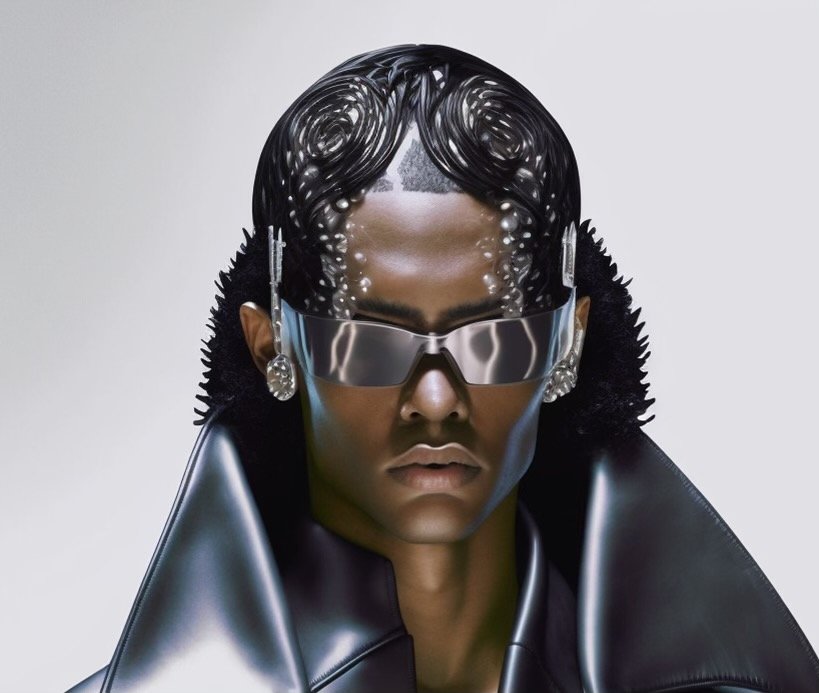Fashion in 2025 is experiencing an unprecedented transformation, driven by the rapid evolution of artificial intelligence (AI). No longer just a backend tool for data analysis or supply chain management, AI has emerged as a creative powerhouse capable of designing entire collections, predicting trends with incredible accuracy, and even innovating new fabrics.
The intersection of fashion and technology is no longer a futuristic concept—it is happening now. From AI-powered virtual designers to algorithm-driven customization, the industry is experiencing a radical shift that is redefining how clothes are created, sold, and even worn. But what does this mean for designers, brands, and consumers? Let’s take a deep dive into how AI is shaping the future of fashion in 2025 and beyond.
How AI is Redefining Fashion Design
For decades, fashion design has been an art that relies on human creativity, craftsmanship, and intuition. However, in 2025, AI is actively participating in the creative process, helping designers push boundaries in ways never imagined.
AI-Powered Fashion Design: From Data to Dress
AI-driven software now analyzes vast amounts of historical fashion data, including previous runway collections, consumer purchasing behaviors, color trends, and fabric preferences. By processing these datasets, AI can generate innovative clothing designs tailored to current market demands and aesthetic shifts.
Companies like The Fabricant and DressX are pioneering AI-generated fashion, where garments exist purely in digital form. These digital pieces are used in virtual worlds, gaming platforms, and social media, allowing users to showcase unique styles without contributing to fashion waste.
Luxury brands are also leveraging AI to assist human designers. Instead of replacing creativity, AI serves as a collaborative tool that provides suggestions based on historical trends, consumer psychology, and upcoming cultural movements. This allows designers to experiment with futuristic aesthetics while staying aligned with what the market desires.
AI as a Trend Forecaster
Gone are the days when fashion brands relied on gut feelings or past experiences to predict trends. AI-driven trend forecasting tools now scan millions of images, social media posts, fashion blogs, and e-commerce sites to identify emerging styles in real time.
For example, if an oversized blazer suddenly gains traction on TikTok or Instagram, AI will instantly detect this shift and alert brands to produce similar styles before competitors catch on. AI is also able to predict micro-trends, ensuring that brands stay ahead of rapidly changing consumer preferences.
Hyper-Personalized Clothing and Virtual Try-Ons
AI-Driven Customization: Tailored Fashion for Everyone
Personalization is no longer a luxury—it’s an expectation. In 2025, AI-powered fashion brands are offering mass customization, where consumers can design clothes based on their body type, lifestyle, climate, and even mood.
Imagine an AI-powered fashion assistant that scans your wardrobe, analyzes your style preferences, and recommends new outfits based on your existing collection. This is the reality of AI-driven styling in 2025. Companies are now integrating body-scanning technology that enables customers to receive tailored clothing without the need for in-person fittings.
Fashion houses are also using generative design algorithms, where AI suggests outfit variations in real-time based on customer inputs. Whether it’s adjusting a dress’s neckline, tweaking a sleeve length, or modifying fabric textures, AI ensures that every piece feels uniquely crafted for the wearer.
The Virtual Dressing Room Revolution
Shopping has become a high-tech experience, with augmented reality (AR) and AI-driven virtual try-ons replacing traditional fitting rooms. Consumers can now visualize how clothing will look on them through 3D body mapping, which creates a realistic digital twin that mirrors their exact measurements.
Instead of physically trying on multiple outfits, customers simply stand in front of a smart mirror or use a mobile app that overlays digital clothing onto their image. AI analyzes fit, movement, and styling recommendations, ensuring a seamless shopping experience.
This technology has been particularly beneficial for online retailers, reducing return rates and increasing customer confidence in online purchases. No more guessing whether a dress will fit—AI ensures accuracy before a purchase is even made.
AI in Sustainable Fashion: Reducing Waste, Increasing Efficiency
Sustainability is a major concern in the fashion industry, and AI is playing a pivotal role in making fashion more eco-friendly.
Smart Fabric Innovation
AI is now helping researchers develop sustainable, biodegradable fabrics that reduce environmental impact. Lab-grown leather, AI-generated plant-based dyes, and self-repairing textiles are becoming more common, minimizing the industry’s reliance on harmful chemicals and excessive waste.
Reducing Overproduction with AI-Optimized Inventory
Fashion brands often overproduce clothing, leading to massive waste. AI-powered demand forecasting allows brands to manufacture only what’s needed, reducing excess inventory and cutting costs.
By analyzing consumer buying patterns and regional trends, AI ensures that brands produce just the right amount of each design. This significantly lowers the risk of unsold products ending up in landfills or clearance sales.
AI-Powered Resale and Circular Fashion
Secondhand and resale markets are booming, and AI is making them even more efficient. Companies like The RealReal and Vestiaire Collective are using AI to authenticate luxury secondhand items, ensuring customers receive genuine products. AI is also enabling peer-to-peer fashion exchanges, where users can sell, swap, or rent outfits seamlessly through digital platforms.
The Future of AI in Fashion
While AI is revolutionizing the fashion industry, it also raises questions about the balance between technology and human creativity. Will AI ever replace designers? Can AI-generated fashion truly capture the depth of human emotion and cultural storytelling?
AI-Generated Fashion Influencers
In 2025, AI is not just designing clothes—it’s also wearing them. Virtual influencers, powered by AI, are modeling the latest trends on social media, blurring the line between reality and digital aesthetics. These AI-generated personalities are engaging with audiences, offering styling tips, and even collaborating with brands.
Robotic Fashion Designers
The rise of AI-generated fashion doesn’t mean human designers are obsolete. Instead, robotic co-designers are assisting in fabric selection, pattern creation, and garment assembly. AI helps designers optimize their creative workflow, allowing them to focus on storytelling and innovation rather than repetitive tasks.
The Ethics of AI-Designed Fashion
As AI takes a more active role in fashion, ethical considerations arise. Who owns AI-generated designs? Should AI-generated fashion be labeled differently from human-designed clothing? These questions are shaping discussions in the industry, leading to new regulations and ethical guidelines for AI-driven creativity.
Conclusion: A Future Where Fashion and AI Coexist
AI-designed fashion is no longer a futuristic concept—it’s a reality that is transforming how clothes are created, customized, and consumed. From AI-powered trend forecasting to hyper-personalized fashion experiences, artificial intelligence is reshaping the industry at every level.
However, while AI is revolutionizing efficiency and sustainability, human creativity remains irreplaceable. The future of fashion lies in the synergy between technology and artistic expression, where designers harness AI as a tool to push the boundaries of innovation.

